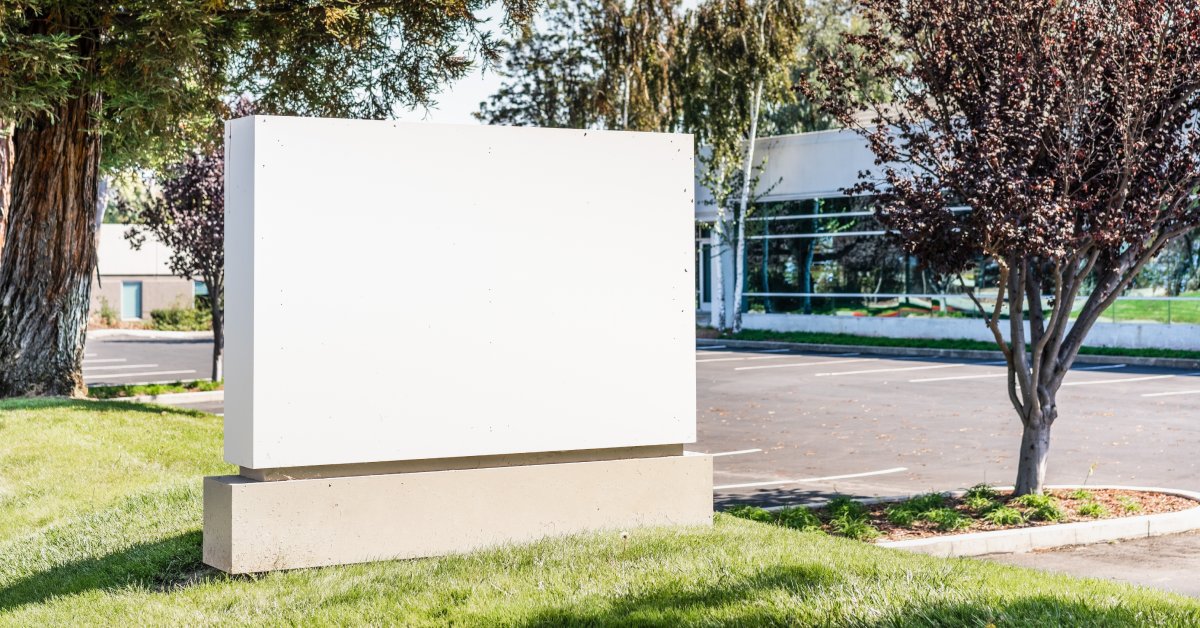
Business signage is crucial for attracting customers and communicating your brand message. With so many options available, choosing the right signage can feel overwhelming. Both temporary and permanent signs serve important purposes, but understanding their unique benefits and limitations will help you make the best decision for your specific needs.
This guide will walk you through the specifics of both temporary and permanent signs. Whether you're launching a new business, promoting a special event, or establishing a long-term brand presence, we’re here to help you figure out which option is the ideal fit for your business goals.
A Guide to Temporary Signs
Temporary signs offer short-term solutions for businesses that need quick, flexible advertising options. These signs include banners, yard or sidewalk signs, and portable displays that can be easily installed and removed as needed. Many businesses use temporary signs for grand openings, seasonal promotions, special events, or construction announcements. Their versatility allows businesses to communicate immediate messages to customers without committing to a long-term installation.
The materials used for temporary signs, such as vinyl, corrugated plastic, foam board, and fabric displays, are typically lighter and less expensive than those used for permanent installations. These materials allow for vibrant colors and eye-catching designs while remaining cost-effective for short-term use.
Advantages of Temporary Signs
One of the most significant advantages of temporary signs is their affordability. Since they use less expensive materials, they are a budget-friendly way to advertise. Temporary signs are also lightweight and portable, so you can easily move them to different locations to maximize visibility. Installation is also simple, often requiring no special tools or professional help, which saves you both time and money.
Drawbacks of Temporary Signs
The main drawback of temporary signs is their lack of durability. They are not built to withstand harsh weather conditions for long periods. Additionally, temporary signage might not project the same sense of quality and permanence as other signs. For a business trying to build a strong, lasting brand image, relying solely on temporary signage may fall short in establishing a long-term presence.

A Guide to Permanent Signs
Permanent signs are created for long-term use and are built to last. When you think of a storefront or a corporate headquarters, the permanent sign is often the first thing that comes to mind.
Monument signs, channel letters, and building-mounted signs are all designed to be a fixed part of the landscape, providing consistent visibility and reinforcement of the brand. These signs are made from durable materials like metal, wood, stone, or high-quality plastics that can resist weather conditions and maintain their appearance over extended periods. They are installed securely and are intended to be a lasting fixture of a business's location.
Advantages of Permanent Signs
Durability is the primary advantage of permanent signs. Constructed from robust materials, they can withstand severe weather and can serve your business for decades.
Permanent signs also project a sense of stability and professionalism. A high-quality, professionally installed sign conveys to customers that your business is established and trustworthy. It builds brand recognition and helps customers locate your business easily.
Drawbacks of Permanent Signs
The most significant drawback of permanent signs is their initial cost. The high-quality materials and professional installation required make them a much larger upfront investment compared to temporary signs. Another consideration is their lack of flexibility. After a permanent sign is installed, making changes or updates as your business evolves is challenging and often comes with substantial additional costs.

Comparing Key Factors Between Signage Types
When deciding between temporary and permanent signs, you should consider several critical factors. To pick the best sign for your business, it helps to know how these two types of signage differ in a few key areas.
Cost Considerations
Temporary signs have a much lower upfront cost, making them an attractive option for short-term campaigns or businesses with tight budgets. However, their potential need for frequent replacement can lead to recurring expenses. Permanent signs require a significant initial investment, but their durability means they are a one-time purchase that can last for many years, which may offer a better return on investment over the long term.
Durability and Longevity
One thing to keep in mind about temporary signs is that they are not designed for longevity and can be easily damaged. They are best suited for use over days, weeks, or a few months. In contrast, permanent signs are built from sturdy materials designed to endure for years or even decades. If you need a sign that will consistently represent your brand with minimal maintenance, a permanent sign is the superior choice.
Design Flexibility
Temporary signs offer great flexibility for messaging, as you can easily create and swap out signs for different promotions, seasons, or events. This allows for dynamic and timely marketing for your business and any key brand messages.
Permanent signs are less flexible in this regard. While they are highly customizable during the initial design phase, changing the message or look once installed is a costly and challenging process. They are best for displaying core brand information that does not change.
Which Signage Would Work Best for You?
Temporary signs work best for businesses with short-term needs, limited budgets, or regularly changing messages. They excel in situations like grand openings, seasonal promotions, construction announcements, or special events where flexibility and quick deployment matter more than long-term durability. Their low cost and portability make them perfect for situations where the message is time-sensitive and needs to be deployed quickly and affordably.
On the other hand, permanent signs are the best choice for establishing your business's physical presence and building long-term brand identity. They work particularly well for retail stores, professional offices, restaurants, and service businesses that want to build strong local recognition and communicate reliability to potential customers. The investment in permanent signage pays off when businesses plan to operate from the same location for several years and want to establish a strong visual presence in their community.
Making Your Sign Investment Count
Your choice between temporary and permanent signs ultimately depends on your specific business goals, budget, and timeline. Consider your location stability, message consistency needs, and available resources when making this decision. Many successful businesses use both types of signage strategically, combining permanent signs for consistent brand presence with temporary signs for special promotions and events.
If you are still unsure what will work for you, Sign On can help. Our team has experience in designing and installing a wide range of signs and can offer guidance to ensure you get the perfect solution for your company. Request a quote using our website today to get started!


